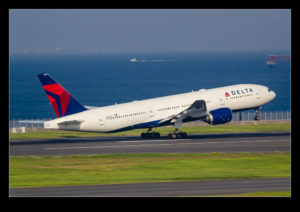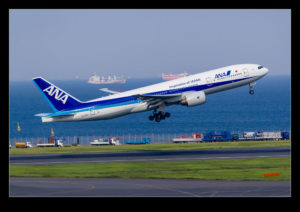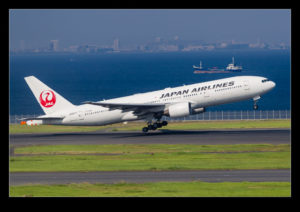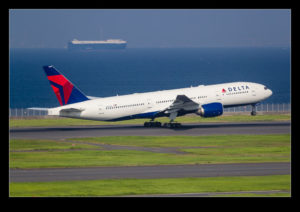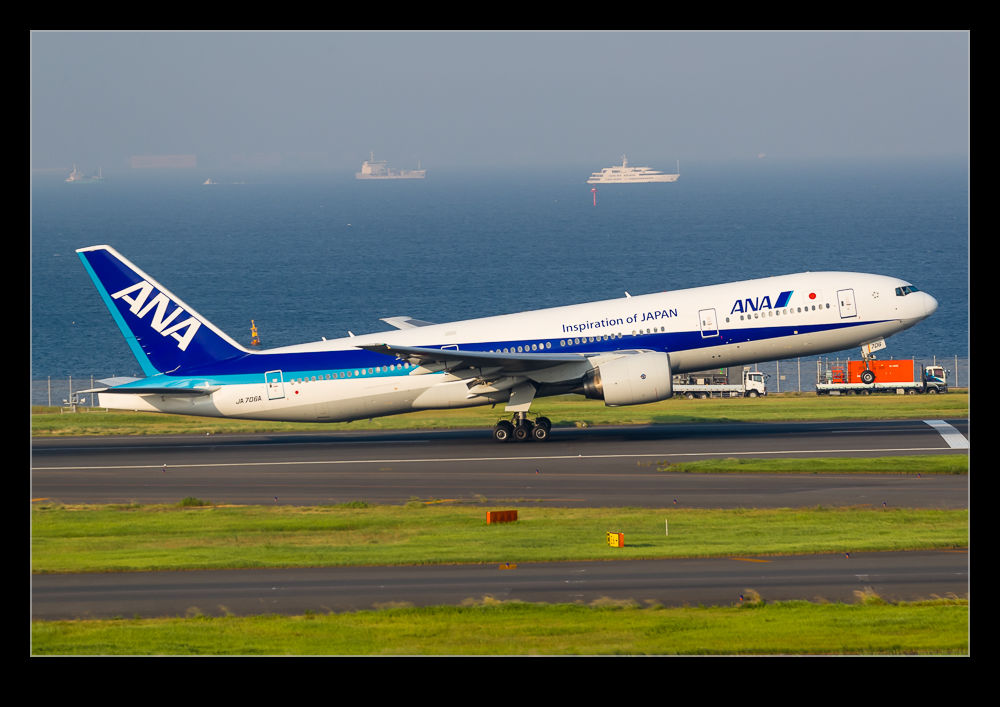 While I enjoyed my visit to Haneda earlier this year, I was a little frustrated by one thing. Regular readers will know of my interest in trying to capture the articulated gear feature of the 777-300ER. Haneda provided a great opportunity to photograph this as the departing planes were rotating almost directly in front of me. It is also an airport that gets plenty of 777s. Unfortunately, all of the ones that came my way were 200ERs. There were 300ERs departing too but they all went off the parallel runway on the opposite side of the terminal to me. I could only see them once airborne and backlit. Someone in air traffic must have been trying to thwart me!
While I enjoyed my visit to Haneda earlier this year, I was a little frustrated by one thing. Regular readers will know of my interest in trying to capture the articulated gear feature of the 777-300ER. Haneda provided a great opportunity to photograph this as the departing planes were rotating almost directly in front of me. It is also an airport that gets plenty of 777s. Unfortunately, all of the ones that came my way were 200ERs. There were 300ERs departing too but they all went off the parallel runway on the opposite side of the terminal to me. I could only see them once airborne and backlit. Someone in air traffic must have been trying to thwart me!
Tag Archives: 777-200er
El Al 777 Overwing Vortex on Takeoff
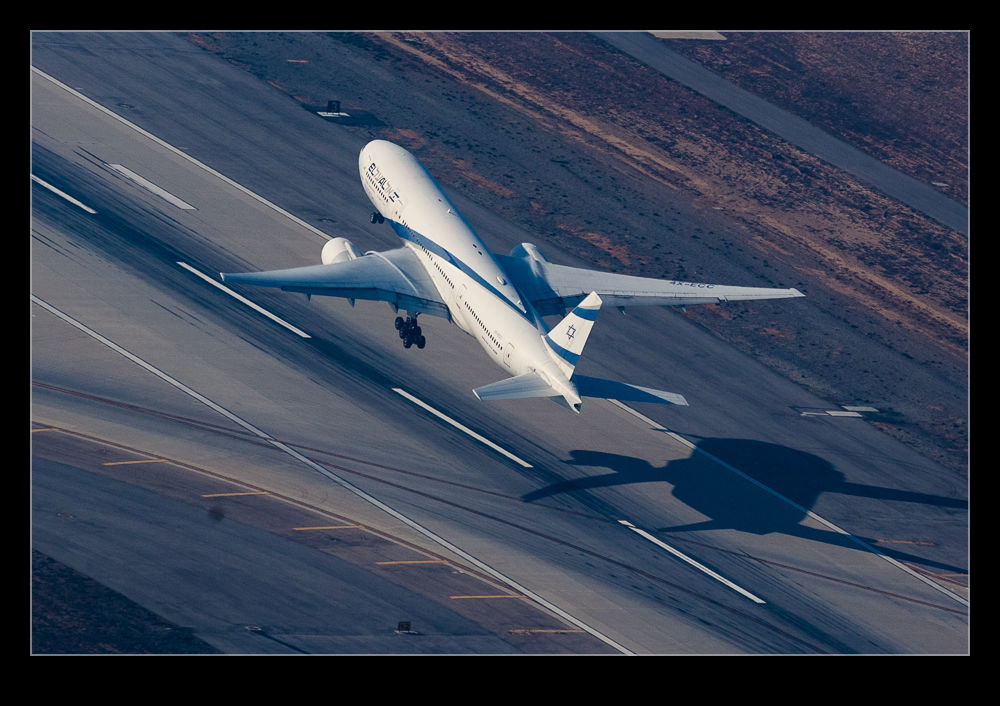 Engine nacelles are optimized for cruise performance. At high angles of attack, their shape results in some rather awkward flow properties which can influence the wing performance above and behind them. In order to control things, you will see small vanes attached to one or both sides of the nacelle that generate a vortex that stabilizes the flow somewhat. As an aircraft rotates at takeoff, the strength of this vortex increases and it will often become visible as moisture in the air condenses within in. This vortex will stream back up and over the leading edge of the wing.
Engine nacelles are optimized for cruise performance. At high angles of attack, their shape results in some rather awkward flow properties which can influence the wing performance above and behind them. In order to control things, you will see small vanes attached to one or both sides of the nacelle that generate a vortex that stabilizes the flow somewhat. As an aircraft rotates at takeoff, the strength of this vortex increases and it will often become visible as moisture in the air condenses within in. This vortex will stream back up and over the leading edge of the wing.
When you are inside the aircraft, this is pretty easy to see provided the conditions are right. From head on or aft they are also quite conspicuous. It isn’t often that you get a good view from above. When I was flying over LAX in the helicopter, the aircraft departing from the north complex had better light on them. However, the runways are offset so the rotation point is further west and beyond the area in which we are allowed to fly. However, you can get a view from above and behind as the jets get airborne. An El Al 777 took off while I was up and I managed to get some shots of it as it rotated and climbed away and the vortices were clear to see as the angle of attack increased.
Puffs Across the Wing
The day I left London was a bit damp which made for a bit of vapor on departure. I was sitting almost directly over the wing. I couldn’t see in to the inlet but I could see vapor puffs in front of the inlet at lower speeds anyway. As we rotated and climbed out, there was plenty of vapor puffing over the upper surface, aided by climbing through a few patches of cloud. I had the video running the get a view of the moisture and here is what I got.
